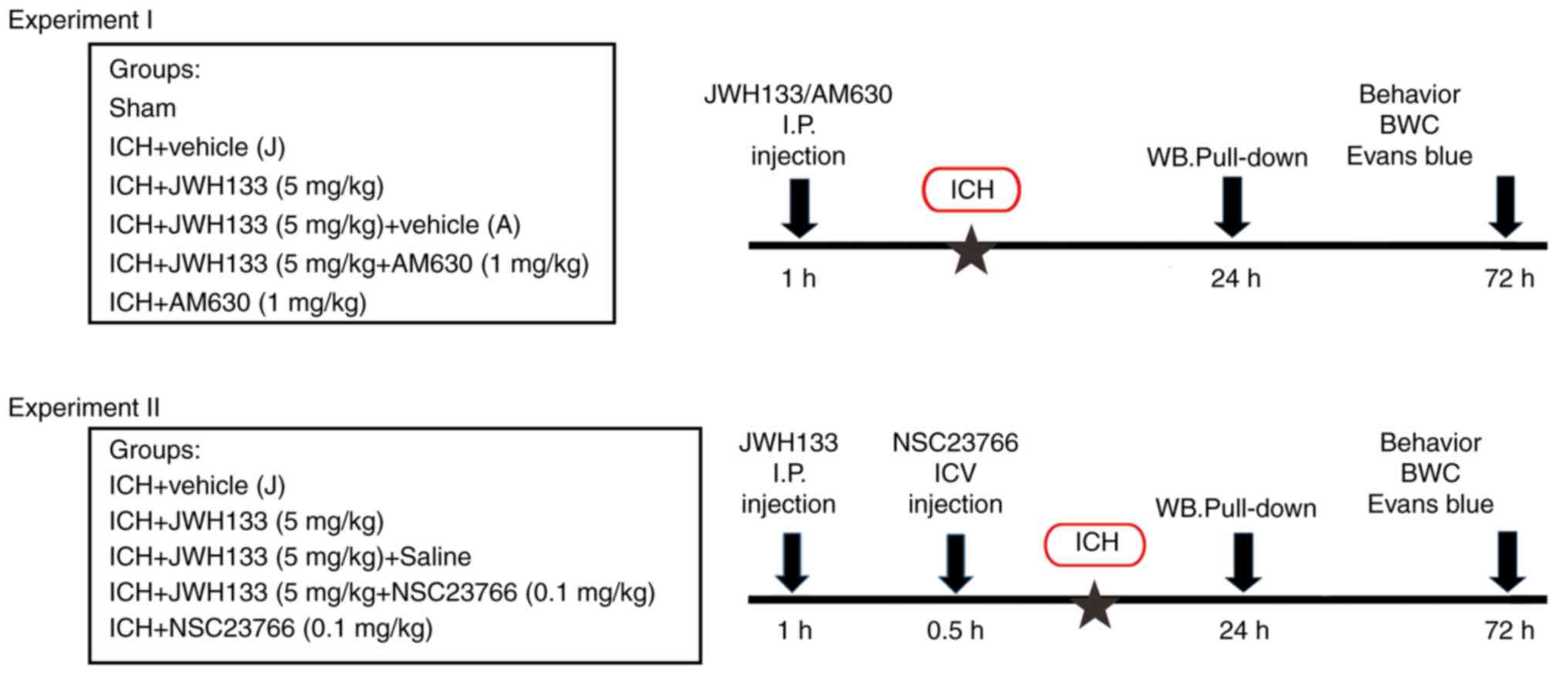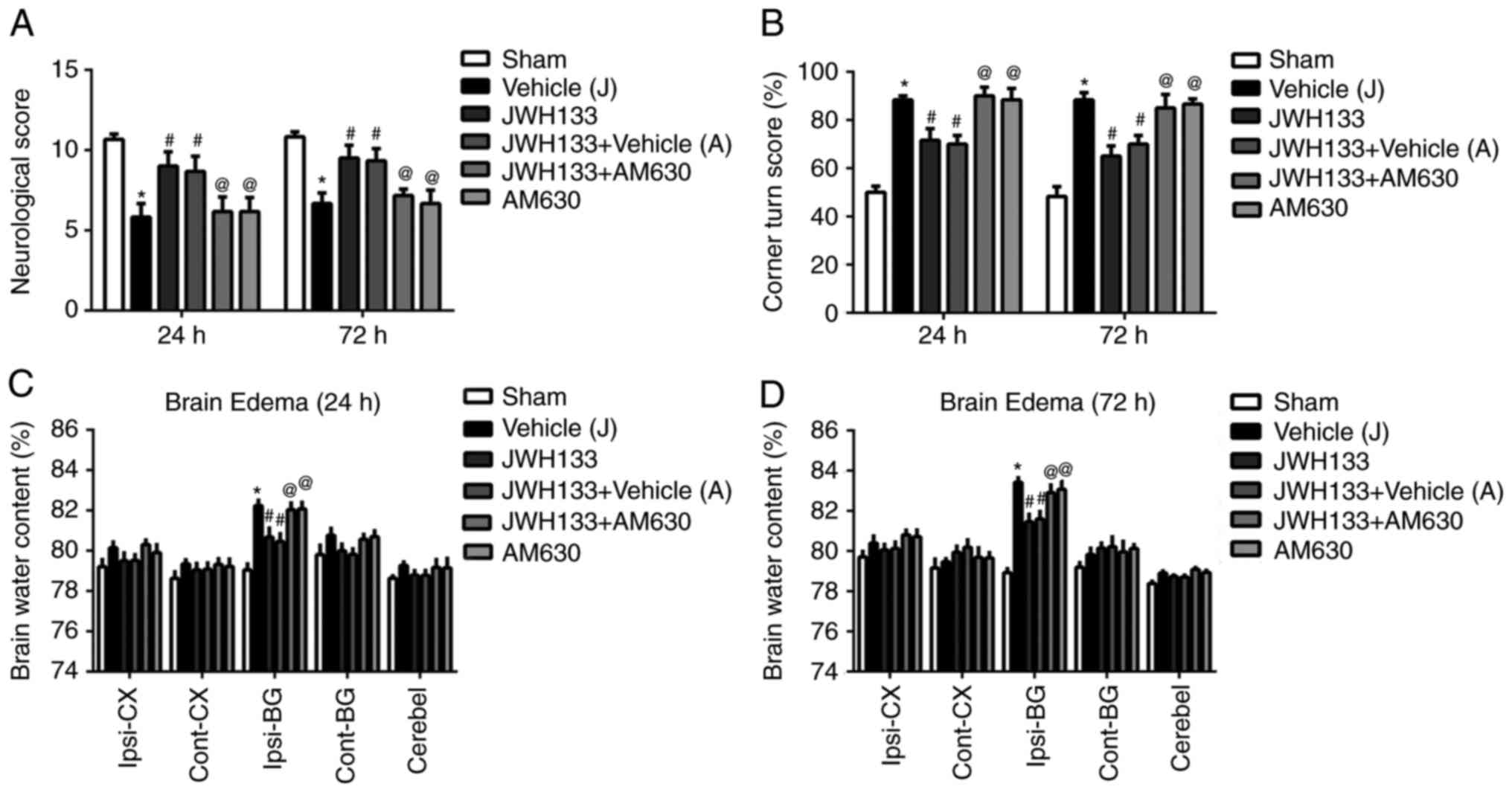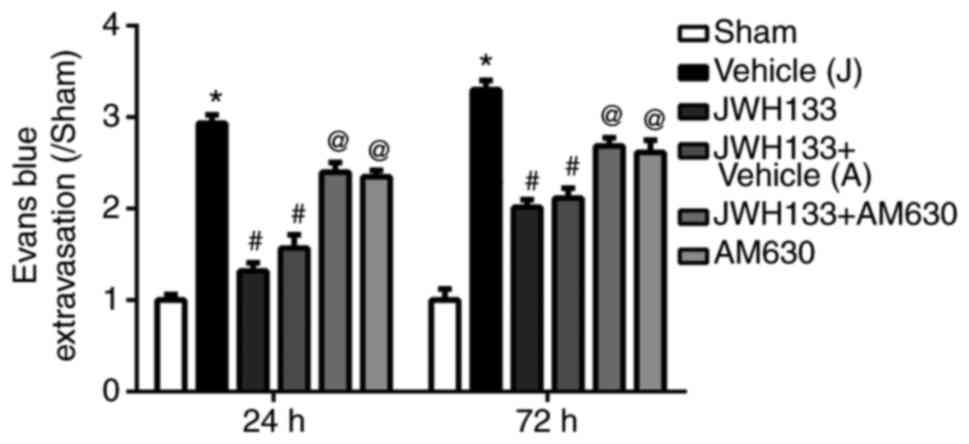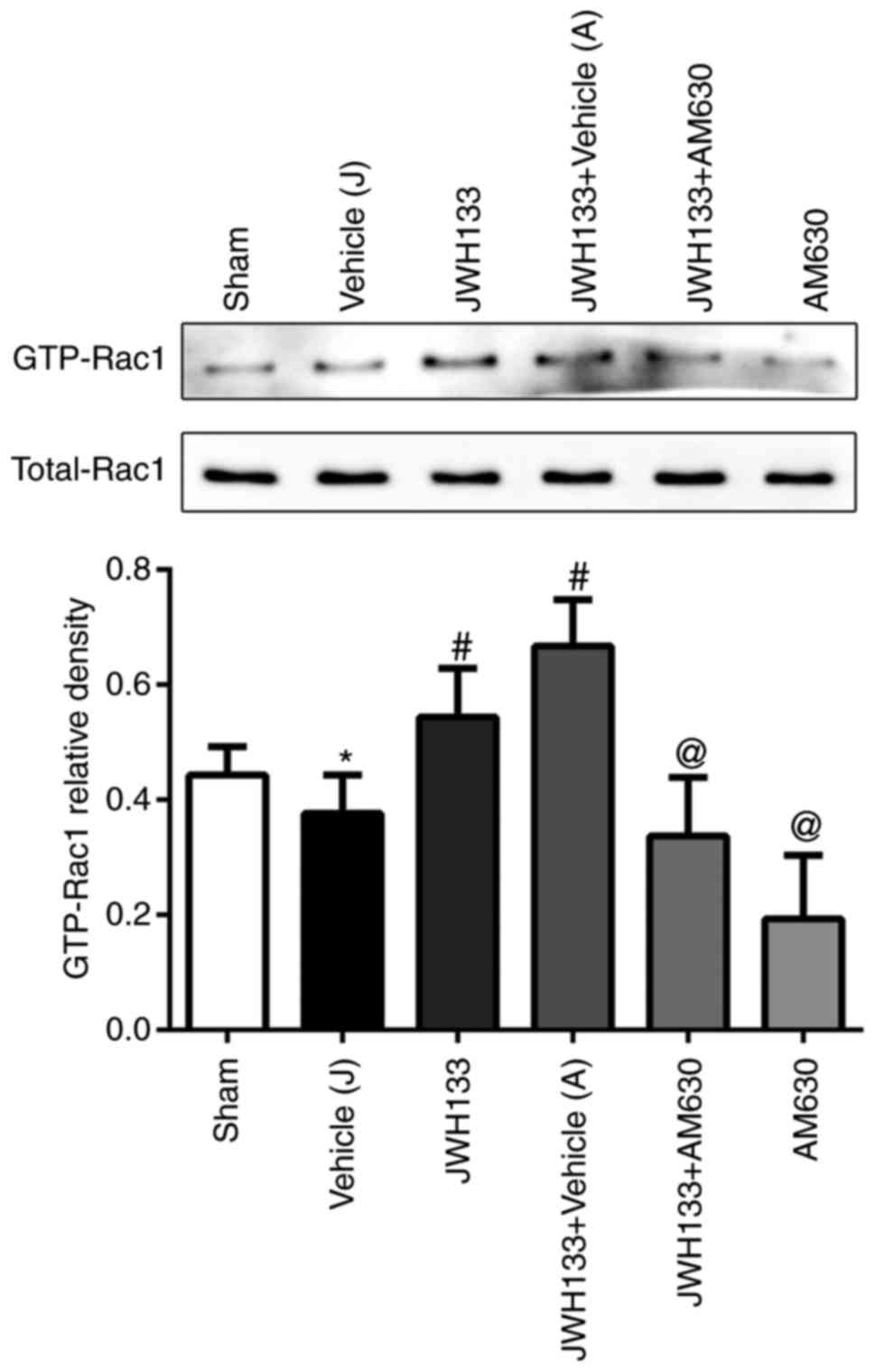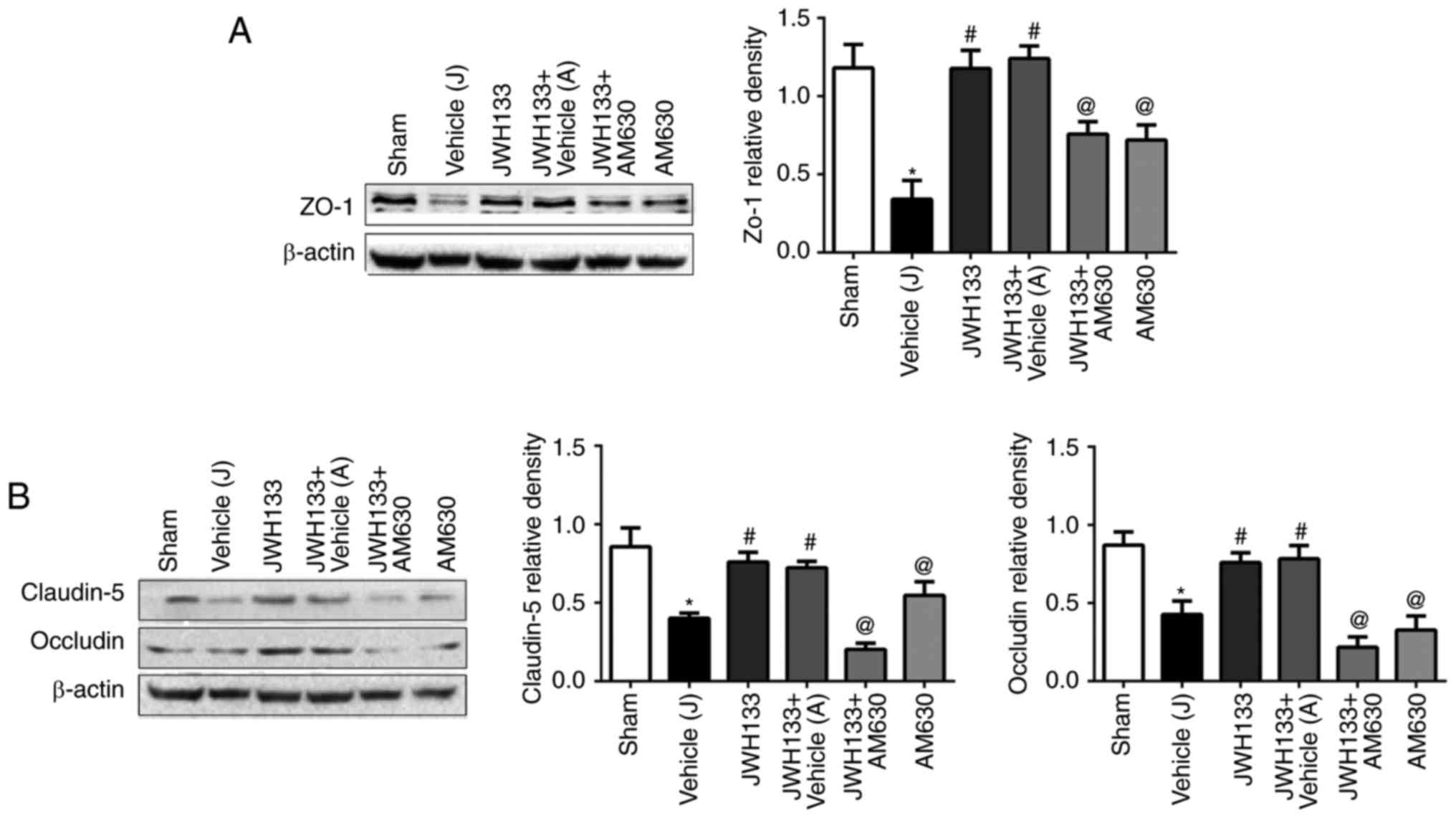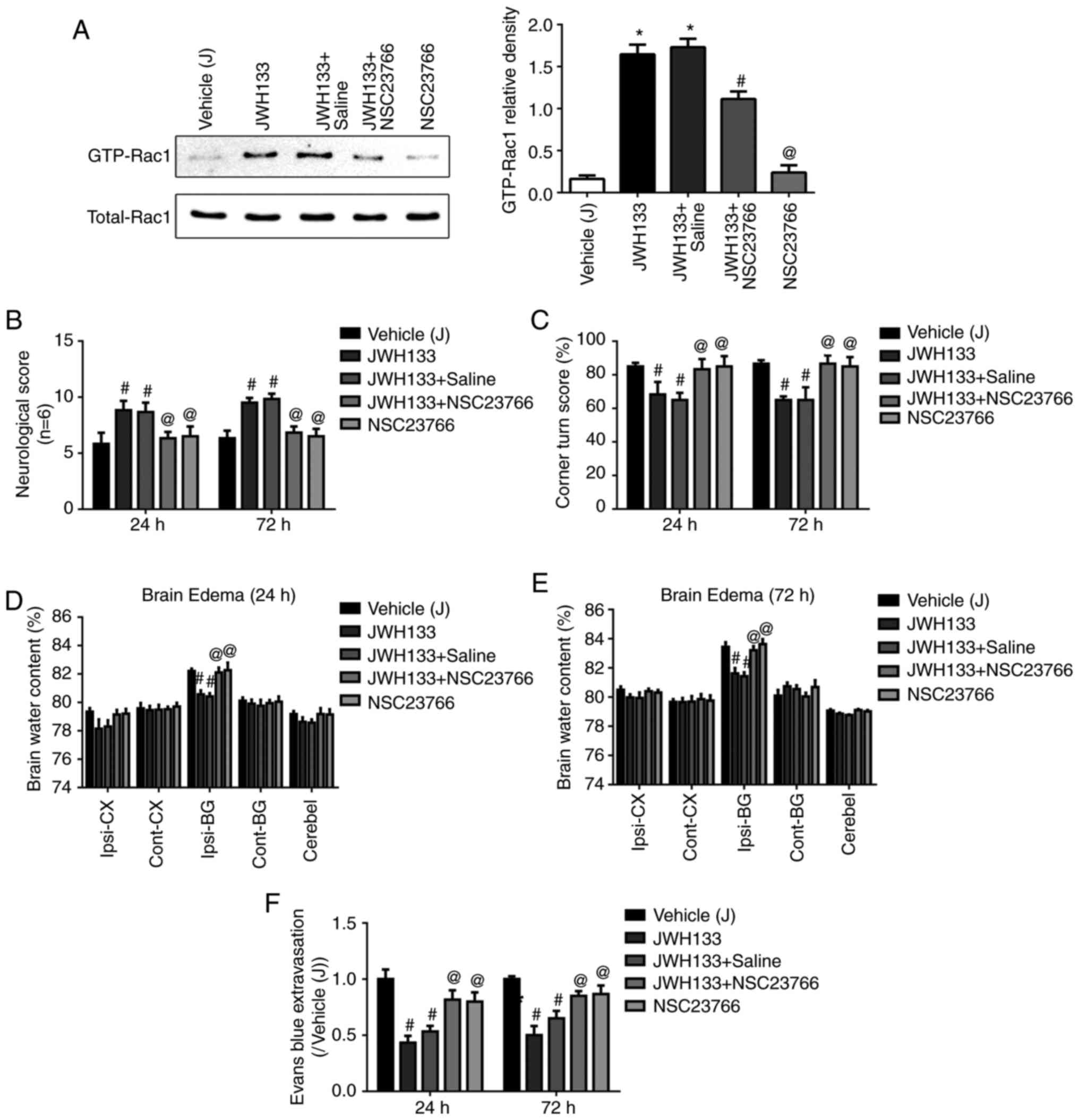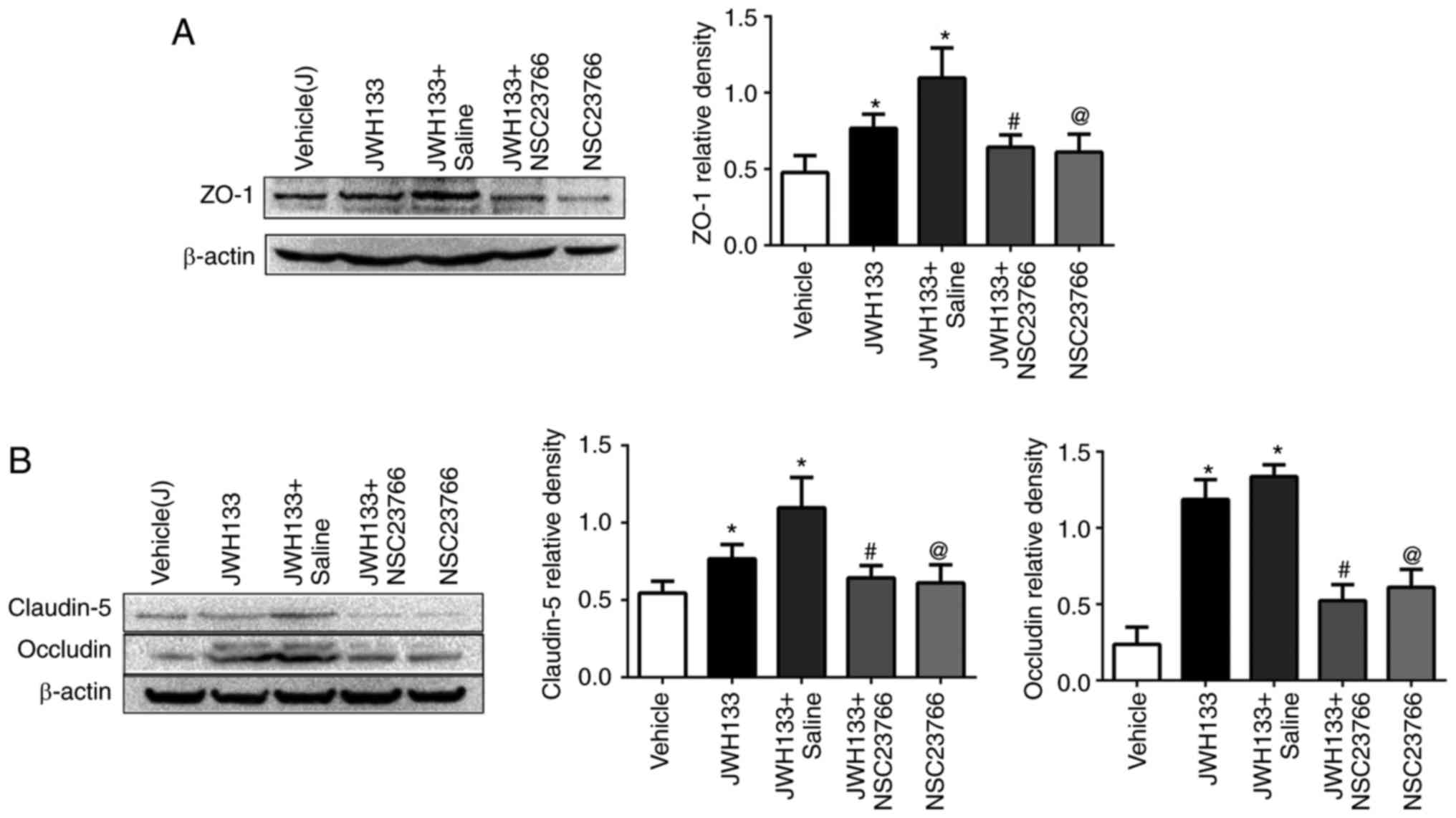|
1
|
Broderick JP, Adams HP Jr, Barsan W,
Feinberg W, Feldmann E, Grotta J, Kase C, Krieger D, Mayberg M,
Tilley B, et al: Guidelines for the management of spontaneous
intracerebral hemorrhage: A statement for healthcare professionals
from a special writing group of the stroke council, American Heart
Association. Stroke. 30:905–915. 1999. View Article : Google Scholar : PubMed/NCBI
|
|
2
|
Qureshi AI, Mendelow AD and Hanley DF:
Intracerebral haemorrhage. Lancet. 373:1632–1644. 2009. View Article : Google Scholar : PubMed/NCBI
|
|
3
|
Sweeney MD, Sagare AP and Zlokovic BV:
Blood-brain barrier breakdown in Alzheimer disease and other
neurodegenerative disorders. Nat Rev Neurol. 14:133–150. 2018.
View Article : Google Scholar : PubMed/NCBI
|
|
4
|
Guan JX, Sun SG, Cao XB, Chen ZB and Tong
ET: Effect of thrombin on blood brain barrier permeability and its
mechanism. Chin Med J (Engl). 117:1677–1681. 2004.
|
|
5
|
Ballabh P, Braun A and Nedergaard M: The
blood-brain barrier: An overview: Structure, regulation, and
clinical implications. Neurobiol Dis. 16:1–13. 2004. View Article : Google Scholar : PubMed/NCBI
|
|
6
|
Bazzoni G and Dejana E: Endothelial
cell-to-cell junctions: Molecular organization and role in vascular
homeostasis. Physiol Rev. 84:869–901. 2004. View Article : Google Scholar : PubMed/NCBI
|
|
7
|
Luh C, Kuhlmann CR, Ackermann B,
Timaru-Kast R, Luhmann HJ, Behl C, Werner C, Engelhard K and Thal
SC: Inhibition of myosin light chain kinase reduces brain edema
formation after traumatic brain injury. J Neurochem. 112:1015–1025.
2010. View Article : Google Scholar
|
|
8
|
Kahles T, Luedike P, Endres M, Galla HJ,
Steinmetz H, Busse R, Neumann-Haefelin T and Brandes RP: NADPH
oxidase plays a central role in blood-brain barrier damage in
experimental stroke. Stroke. 38:3000–3006. 2007. View Article : Google Scholar : PubMed/NCBI
|
|
9
|
Xu JY and Chen C: Endocannabinoids in
synaptic plasticity and neuroprotection. Neuroscientist.
21:152–168. 2015. View Article : Google Scholar
|
|
10
|
Devane WA, Dysarz FR III, Johnson MR,
Melvin LS and Howlett AC: Determination and characterization of a
cannabinoid receptor in rat brain. Mol Pharmacol. 34:605–613.
1988.PubMed/NCBI
|
|
11
|
Matsuda LA, Lolait SJ, Brownstein MJ,
Young AC and Bonner TI: Structure of a cannabinoid receptor and
functional expression of the cloned cDNA. Nature. 346:561–564.
1990. View
Article : Google Scholar : PubMed/NCBI
|
|
12
|
Haugh O, Penman J, Irving AJ and Campbell
VA: The emerging role of the cannabinoid receptor family in
peripheral and neuro-immune interactions. Curr Drug Targets.
17:1834–1840. 2016. View Article : Google Scholar : PubMed/NCBI
|
|
13
|
Chi OZ, Barsoum S, Grayson J, Hunter C,
Liu X and Weiss HR: Effects of cannabinoid receptor agonist WIN
55,212-2 on blood-brain barrier disruption in focal cerebral
ischemia in rats. Pharmacology. 89:333–338. 2012. View Article : Google Scholar : PubMed/NCBI
|
|
14
|
Fujii M, Sherchan P, Krafft PR, Rolland
WB, Soejima Y and Zhang JH: Cannabinoid type 2 receptor stimulation
attenuates brain edema by reducing cerebral leukocyte infiltration
following subarachnoid hemorrhage in rats. J Neurol Sci.
342:101–106. 2014. View Article : Google Scholar : PubMed/NCBI
|
|
15
|
Tao Y, Tang J, Chen Q, Guo J, Li L, Yang
L, Feng H, Zhu G and Chen Z: Cannabinoid CB2 receptor stimulation
attenuates brain edema and neurological deficits in a germinal
matrix hemorrhage rat model. Brain Res. 1602:127–135. 2015.
View Article : Google Scholar : PubMed/NCBI
|
|
16
|
Amenta PS, Jallo JI, Tuma RF and Elliott
MB: A cannabinoid type 2 receptor agonist attenuates blood-brain
barrier damage and neurodegeneration in a murine model of traumatic
brain injury. J Neurosci Res. 90:2293–2305. 2012. View Article : Google Scholar : PubMed/NCBI
|
|
17
|
Etienne-Manneville S and Hall A: Rho
GTPases in cell biology. Nature. 420:629–635. 2002. View Article : Google Scholar : PubMed/NCBI
|
|
18
|
Gerhard R, John H, Aktories K and Just I:
Thiol-modifying phenylarsine oxide inhibits guanine nucleotide
binding of Rho but not of Rac GTPases. Mol Pharmacol. 63:1349–1355.
2003. View Article : Google Scholar : PubMed/NCBI
|
|
19
|
Huang B, Krafft PR, Ma Q, Rolland WB,
Caner B, Lekic T, Manaenko A, Le M, Tang J and Zhang JH: Fibroblast
growth factors preserve blood-brain barrier integrity through RhoA
inhibition after intracerebral hemorrhage in mice. Neurobiol Dis.
46:204–214. 2012. View Article : Google Scholar : PubMed/NCBI
|
|
20
|
Persidsky Y, Heilman D, Haorah J,
Zelivyanskaya M, Persidsky R, Weber GA, Shimokawa H, Kaibuchi K and
Ikezu T: Rho-mediated regulation of tight junctions during monocyte
migration across the blood-brain barrier in HIV-1 encephalitis
(HIVE). Blood. 107:4770–4780. 2006. View Article : Google Scholar : PubMed/NCBI
|
|
21
|
Tang J, Chen Q, Guo J, Yang L, Tao Y, Li
L, Miao H, Feng H, Chen Z and Zhu G: Minocycline attenuates
neonatal germin al-matrix-hemorrhage-induced neuroinflammation and
brain edema by activating cannabinoid receptor 2. Mol Neurobiol.
53:1935–1948. 2016. View Article : Google Scholar
|
|
22
|
Yang F, Wang Z, Zhang JH, Tang J, Liu X,
Tan L, Huang QY and Feng H: Receptor for advanced glycation
end-product antagonist reduces blood-brain barrier damage after
intracerebral hemorrhage. Stroke. 46:1328–1336. 2015. View Article : Google Scholar : PubMed/NCBI
|
|
23
|
Garcia JH, Wagner S, Liu KF and Hu XJ:
Neurological deficit and extent of neuronal necrosis attributable
to middle cerebral artery occlusion in rats. Statistical
validation. Stroke. 26:627–635. 1995. View Article : Google Scholar : PubMed/NCBI
|
|
24
|
Li X, Blizzard KK, Zeng Z, DeVries AC,
Hurn PD and McCullough LD: Chronic behavioral testing after focal
ischemia in the mouse: Functional recovery and the effects of
gender. Exp Neurol. 187:94–104. 2004. View Article : Google Scholar : PubMed/NCBI
|
|
25
|
Manaenko A, Chen H, Kammer J, Zhang JH and
Tang J: Comparison Evans Blue injection routes: Intravenous versus
intraperitoneal, for measurement of blood-brain barrier in a mice
hemorrhage model. J Neurosci Methods. 195:206–210. 2011. View Article : Google Scholar
|
|
26
|
Ma Q, Huang B, Khatibi N, Rolland WN II,
Suzuki H, Zhang JH and Tang J: PDGFR-alpha inhibition preserves
blood-brain barrier after intracerebral hemorrhage. Ann Neurol.
70:920–931. 2011. View Article : Google Scholar : PubMed/NCBI
|
|
27
|
Cheng CC, Lai YC, Lai YS, Hsu YH, Chao WT,
Sia KC, Tseng YH and Liu YH: Transient knockdown-mediated
deficiency in plectin alters hepatocellular motility in association
with activated FAK and Rac1-GTPase. Cancer Cell Int. 15:292015.
View Article : Google Scholar : PubMed/NCBI
|
|
28
|
Wang L, Fan W, Cai P, Fan M, Zhu X, Dai Y,
Sun C, Cheng Y, Zheng P and Zhao BQ: Recombinant ADAMTS13 reduces
tissue plasminogen activator-induced hemorrhage after stroke in
mice. Ann Neurol. 73:189–198. 2013. View Article : Google Scholar : PubMed/NCBI
|
|
29
|
Vose LR, Vinukonda G, Jo S, Miry O,
Diamond D, Korumilli R, Arshad A, Zia MT, Hu F, Kayton RJ, et al:
Treatment with thyroxine restores myelination and clinical recovery
after intra-ventricular hemorrhage. J Neurosci. 33:17232–17246.
2013. View Article : Google Scholar : PubMed/NCBI
|
|
30
|
Zhou Y, Wang Y, Wang J, Anne Stetler R and
Yang QW: Inflammation in intracerebral hemorrhage: From mechanisms
to clinical translation. Prog Neurobiol. 115:25–44. 2014.
View Article : Google Scholar
|
|
31
|
Yang MC, Zhang HZ, Wang Z, You FL and Wang
YF: The molecular mechanism and effect of cannabinoid-2 receptor
agonist on the blood-spinal cord barrier permeability induced by
ischemia-reperfusion injury. Brain Res. 1636:81–92. 2016.
View Article : Google Scholar : PubMed/NCBI
|
|
32
|
Aijaz S, Balda MS and Matter K: Tight
junctions: Molecular architecture and function. Int Rev Cytol.
248:261–298. 2006. View Article : Google Scholar : PubMed/NCBI
|
|
33
|
Kurihara R, Tohyama Y, Matsusaka S, Naruse
H, Kinoshita E, Tsujioka T, Katsumata Y and Yamamura H: Effects of
peripheral cannabinoid receptor ligands on motility and
polarization in neutrophil-like HL60 cells and human neutrophils. J
Biol Chem. 281:12908–12918. 2006. View Article : Google Scholar : PubMed/NCBI
|
|
34
|
Rom S, Zuluaga-Ramirez V, Dykstra H,
Reichenbach NL, Pacher P and Persidsky Y: Selective activation of
cannabinoid receptor 2 in leukocytes suppresses their engagement of
the brain endothelium and protects the blood-brain barrier. Am J
Pathol. 183:1548–1558. 2013. View Article : Google Scholar : PubMed/NCBI
|
|
35
|
Correa F, Mestre L, Docagne F and Guaza C:
Activation of cannabinoid CB2 receptor negatively regulates
IL-12p40 production in murine macrophages: Role of IL-10 and ERK1/2
kinase signaling. Br J Pharmacol. 145:441–448. 2005. View Article : Google Scholar : PubMed/NCBI
|
|
36
|
Montecucco F, Lenglet S, Braunersreuther
V, Burger F, Pelli G, Bertolotto M, Mach F and Steffens S: CB
cannabinoid receptor activation is cardioprotective in a mouse
model of ischemia/reperfusion. J Mol Cell Cardiol. 46:612–620.
2009. View Article : Google Scholar : PubMed/NCBI
|
|
37
|
Sophocleous A, Marino S, Logan JG, Mollat
P, Ralston SH and Idris AI: Bone cell-autonomous contribution of
type 2 cannabinoid receptor to breast cancer-induced osteolysis. J
Biol Chem. 290:22049–22060. 2015. View Article : Google Scholar : PubMed/NCBI
|
|
38
|
Gomez O, Sanchez-Rodriguez MA,
Ortega-Gutierrez S, Vazquez-Villa H, Guaza C, Molina-Holgado F and
Molina-Holgado E: A basal tone of 2-arachidonoylglycerol
contributes to early oligodendrocyte progenitor proliferation by
activating phosphatidylinositol 3-Kinase (PI3K)/AKT and the
mammalian target of rapamycin (MTOR) pathways. J Neuroimmune
Pharmacol. 10:309–317. 2015. View Article : Google Scholar : PubMed/NCBI
|



